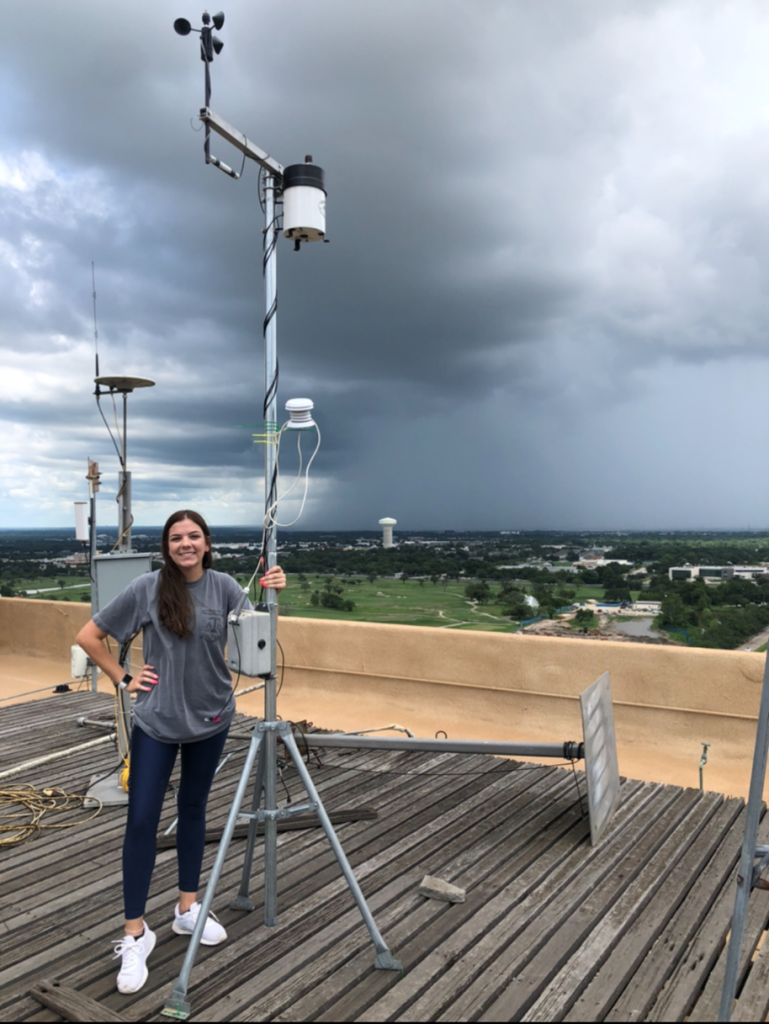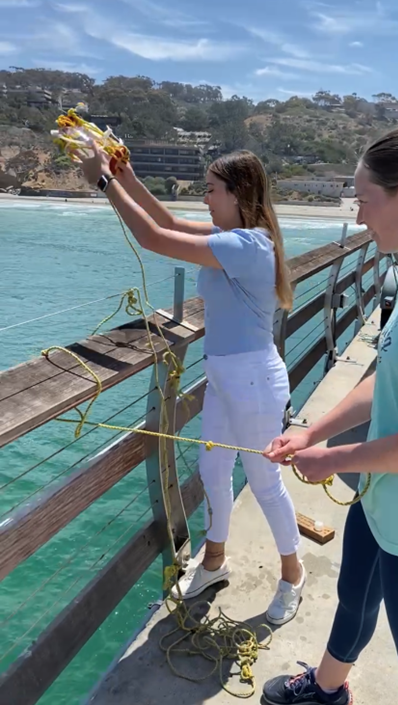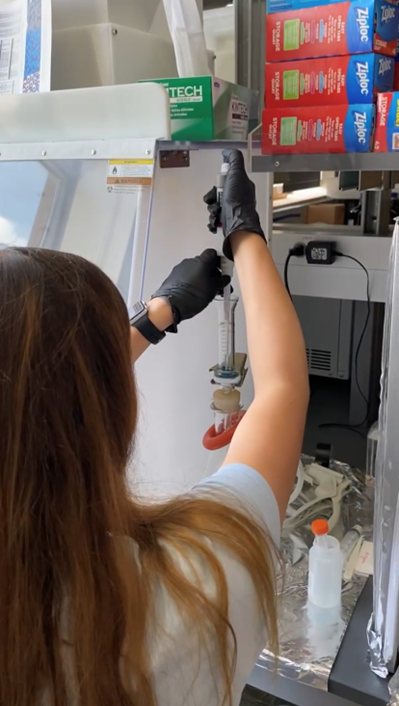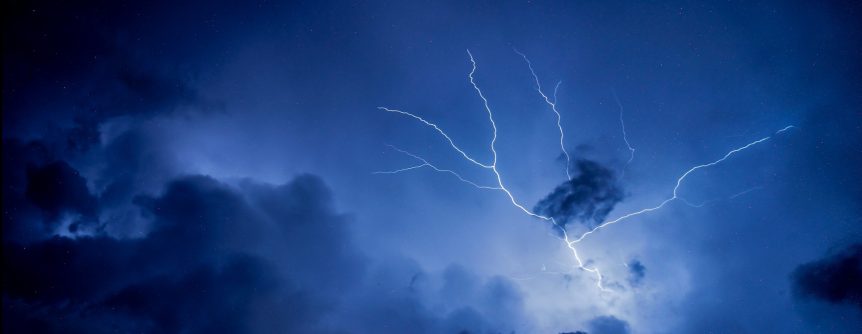Written by: Samantha Greeney, CAICE 2022 SURP Fellow
Growing up I have always been curious of the earth around me, especially the weather.
Actually, I was kind of afraid of the weather as a child because I didn’t understand it. One night we had a huge storm roll in and flashes of lightning lit my room and cracks of thunder shook the walls.
It was so chaotic and overwhelming I ran to my mother and she told me to start counting the seconds between the lightning strike and the thunder.
For every five seconds that would equal a mile between me and the lightning.
Once I began to question the world around me, I became addicted to finding the answers. This eventually led me to become a meteorology student at Texas A&M University with a minor in climate change. I became fascinated with how diverse the weather is throughout the globe and how it will evolve due to climate change.

One summer break I reached out to Dr. Sarah Brooks, a professor at Texas A&M, to see if she had any research opportunities. What I thought may be an easy addition to my resume quickly turned into a passion. Over that summer break I fell in love with the art of research, it is a very challenging but rewarding process.
I continued to work in Dr. Brooks’ lab throughout the fall and spring semester and grew so much knowledge and appreciation for atmospheric research. I knew I wanted to continue this journey and wanted to be a part of something big.

I was so thrilled when I got accepted into the CAICE undergraduate research program, to see how many scientists come together to answer many different questions relating ocean- atmosphere science is truly an honor to be a part of.
In the research project I am in, we are studying ice nucleating particles (INPs) that are sourced from sea spray aerosol emissions and determining how these INP concentrations will change with wind speed.

To do this, we are sampling sea water from SOARS and freezing droplets of these solutions. We will determine the concentration of INPs based on how many droplets freeze by a certain temperature.
Then, we will simultaneously compare air samples on a filter that is pulling air from SOARS and also calculate the INP concentration.
We will compare both the sea water and the air samples at different wind speeds to see how the INP concentration will change with a change in wind speed.
Another project we are doing is studying Transparent Exopolymer Particles (TEP) which are sticky gel like particles formed from phytoplankton and bacteria found in sea water.

TEP can trap other particles like ice nucleating particles (INPs) and thus limit the emission of INPs in sea spray aerosols (SSA). However, an acid called ethylenediaminetetraacetic acid (EDTA) can break up the TEP and therefore we might see more INP emissions after this reaction.
We will compare the amount and size of TEP detected as well as INP concentration before and after the TEP is broken up to see if INP concentrations change.
INP research is important because ice clouds affect the earths radiation budget and if we can better quantify INP concentrations we can improve current climate models.
The biggest, yet simplest advice I would give to people who are interested in research is to just do it!
Start off by reaching out to professors in your department and see what opportunities there are, they will either have projects of their own or know of others and connect you. Another tip I would give is be patient, you will not know lab instruments the first few days in the lab, you won’t have a paper out each month.
High quality research takes time and often has bumps along the way, but when the paper is published, and you’ve contributed to the greater understanding of our planet earth, that’s something to be proud of. Stay curious!

